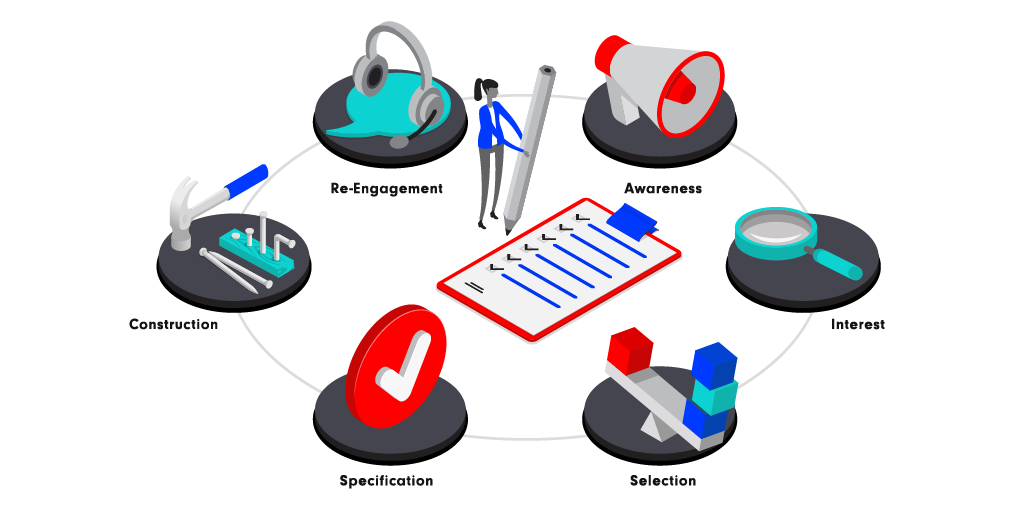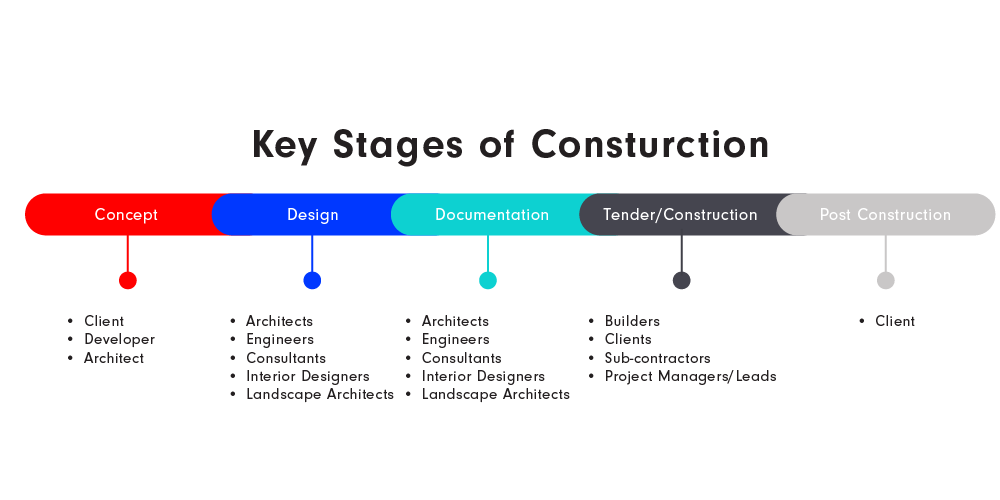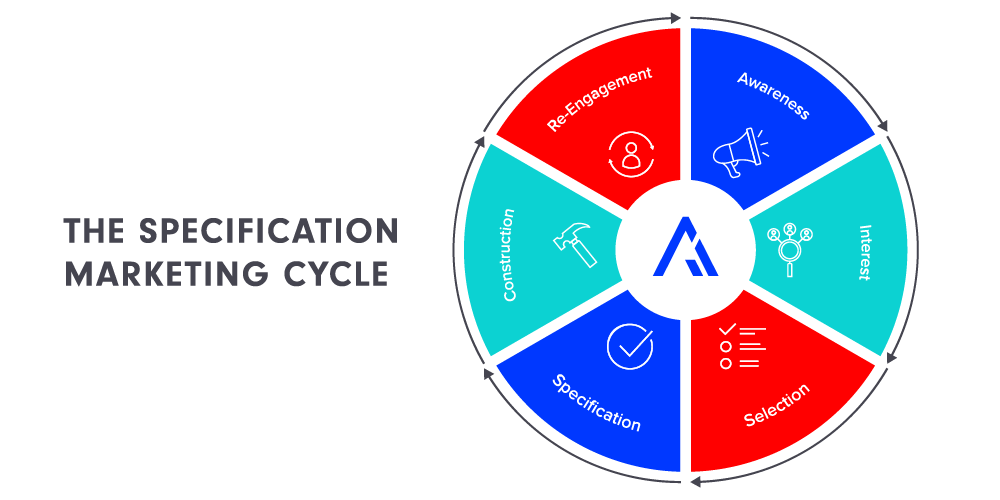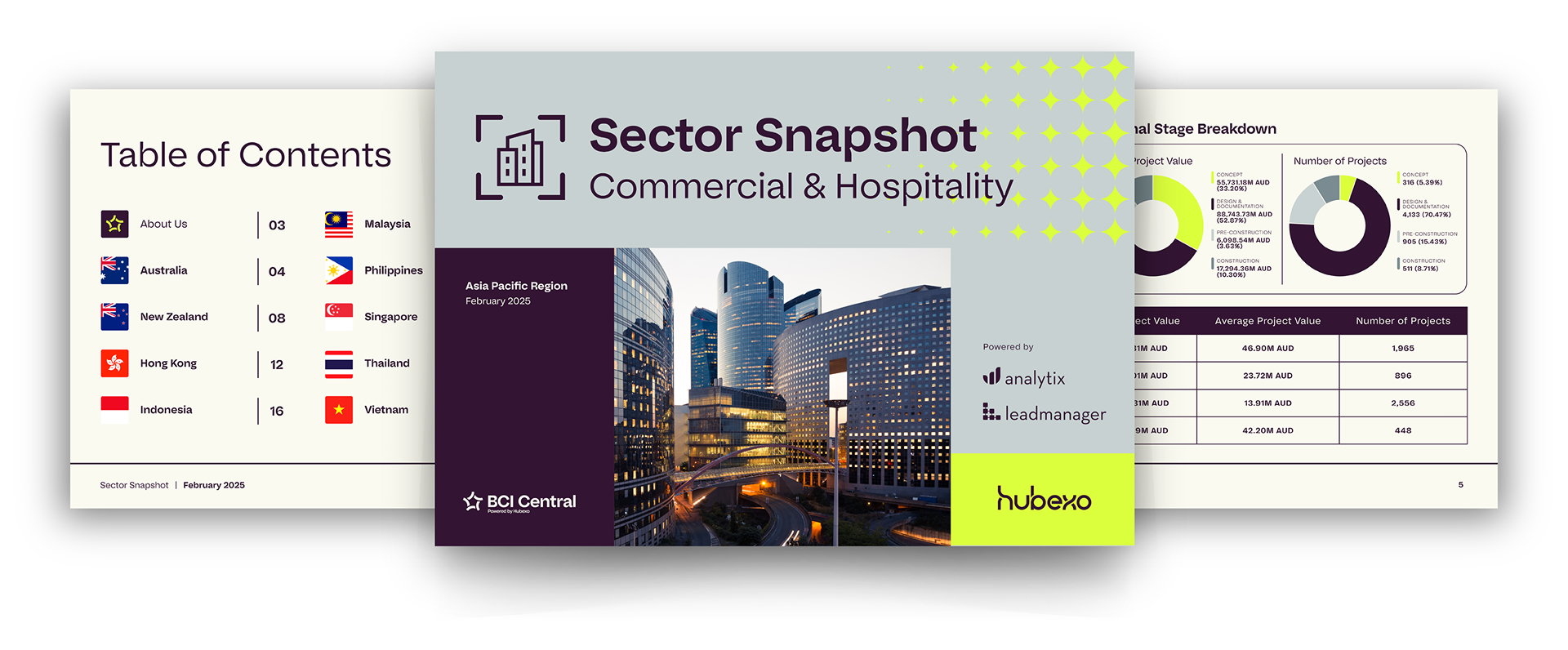- Rumah
- >
- Connecting Your Marketing and Sales Strategies to the Specification Process
Connecting Your Marketing and Sales Strategies to the Specification Process

Connecting your marketing and sales strategies to the specification process may seem like a daunting task, but when we break down the key components and follow a step-by-step guide, it is quite achievable with a lot of reward to follow!
A marketing and sales strategy is a comprehensive plan that outlines how a business will attract and retain customers, generate revenue and achieve its market objectives. It encompasses a range of activities, including market research, branding, advertising, pricing, distribution and sales tactics, all designed to identify target audiences, meet their needs effectively and differentiate the company from competitors.
A comprehensive marketing and sales strategy facilitates products being selected in the specification process by clearly communicating the product’s unique features, benefits and value propositions to decision-makers and influencers involved in the specification. Highlighting the product’s advantages, compliance with industry standards, and potential for solving specific problems, makes it more likely to be chosen over competitors. Additionally, building strong relationships with key stakeholders and providing comprehensive, persuasive information helps position the product as the preferred choice in the specification process. Integrating a well-defined strategy with the specification process ensures consistency and coherence from product development to selection and installation.
In this article, we’ll take a look at:
- Connecting your business strategies to the specification marketing cycle
- Creating awareness dan interest among specifiers, architects and builders
- Showcasing key information that design professionals are looking for and stand out during the decision-making phase
- Preventing product substitutions, ensuring a smooth transition from spesifikasi kepada installation
- Implementing re-engagement strategies for long-term relationships with specifiers and construction professionals
What are the 5 key stages of construction?
Step one in developing your sales and marketing strategy involves knowing the key stages of construction—split into the Design Stages and Tender Stages—and being able to identify the different decision makers during these stages.
Design Stages
- Konsep
- Reka bentuk
- Documentation
During the Design Stages, you are looking to target the developers, architects, supporting engineers and consultants, and sometimes the clients. What’s important to these key stakeholders during Concept, Design and Documentation is that they will be looking for trusted suppliers, access to technical information, products that are fit for purpose, and products that meet the design brief.
Tender Stages
- Tender and Construction
- Post Construction
Moving into the Tender Stages, builders, subcontractors and project managers are also looking to work with trusted suppliers, as well as having a focus on the cost of the product, the lead time and availability of getting the product on site, and the product warranty.
Incorporating Your Marketing & Sales Strategies to the Specification Process
Think about a product that you are trying to get specified. What are you doing to create awareness and genuine interest in your product? How are you getting your product selected and specified? Then, purchased, installed and kept in the project?
Creating awareness is all about letting your target audience know that your product exists; it’s about brand recognition. Being visible starts with developing a well-designed website that is optimised for Google searches. Search Engine Optimisation (SEO) involves improving the quality and quantity of traffic to your website; employing tailored SEO strategies ensure your website appears on the first page of a Google search.
Some businesses employ SEO specialists, but as an expert in your product information and technical details, you can start to put together some content marketing to help improve your chances of being noticed. With a little bit of research into key industry terminology and the projects that your product is best suited to, you can begin to create content that will help an architect or designer better understand your product or solution. White papers, or educational articles, project case studies, and formal Continued Professional Development (CPD) are just some examples of content marketing.
It is also important to consider the role of your sales team in generating awareness; they are the ones that are going to be talking to architects about your brand and product. From a cold calling perspective, does your sales team know who to be targeting and the specific way that target is receiving brand or product messaging? One way to shortlist contacts is to identify the projects that are relevant to your product: what project sector does it fit into? What project size, location and stage? Once you understand this, you’ll be able to segment your target audience. For example, an architect designing an education project will be quite different to an architect that might be designing an aged care project. If your product is suitable for both, how are you going to position that to them individually?
Now that architects are aware of your product—they know who you are and have found your website on Google—what information can you provide them with that will ensure their genuine interest? When it comes to website design, ask yourself:
- How many clicks does it take the architect to find the information they need?
- What product imagery do you have available? Do you have up-close images? Do you have images of the product in application?
Let’s think about case studies: highlighting the types of projects that you’ve been involved in and have worked on is going to boost your credibility as a supplier. Some of the details that an architect is going to be looking for in a case study include:
- Project sector
- Project size
- Project location
- Project brief
- The challenges that were overcome with your solution
- Your work with the designer
- The success of the project
Another way to secure interest in your product is with CPD, or educational content on your website. Registered architects must complete yearly CPD points to maintain their architectural registration. So, you could consider becoming a CPD provider, creating CPD content and presentations that provide a learning outcome for registered architects while also educating them about your product.
Architects are now aware of who you are and are interested in your solution; how do you secure your product as the product of choice for their design? At this stage, you need to understand what a design professional needs for their project, and that’s three things: a material and finishes schedule, a specification document, and, in most cases, a 3D model of their project. With these three outcomes in mind, what information can you provide in order to help the designer meet their objectives?
Technical information is crucial, and if the architect can’t easily access this information, they will often choose a different product. So, make sure your product data, and the Australian standards it meets, is readily available, and be prepared to have someone who can answer the designer’s technical questions should they give you a call to discuss your solution.
In Australia, there is an increasing number of requests from architects to manufacturers for 3D model and drawing files. Building Information Modelling (BIM) are digital representations of your product, with all the technical information attached, that can be incorporated into the architect’s design process. It also makes it easier for the designer to compare your product against alternatives and against their project requirements.
Your product has been selected, but this is not where the journey ends. As a product supplier or manufacturer, one of the challenges that you may face at this stage is making sure that your product is written into the specification correctly. A specification works like an architect’s contract for the project; it needs to be up to date, it meets Australian standards, and it has all the relevant information for the builder. The designer is pulling all of this information from your website, your content marketing, and hopefully from your BIM files.
We suggest looking to create a product specification template, and that starts with knowing what a specification looks like. Think about when your product was last specified, and ask yourself:
- What was the scope of work for the project?
- What was noted as the quality assurances?
- What Australian standards were recorded?
- What did the product data look like? And why was it selected and specified for that project?
With these answers, you can start to develop specification templates for different types of projects. One way you can do this, is providing a specification writing service or specification tools, which allows you to sit with an architect and collaborate with them on writing the specification. This in turn helps build a relationship with the designer that will encourage them to come back to you for future projects.
As we enter the construction stage, two things happen that are important to consider. One, the project has officially changed hands from architect to builder; and two, the project objectives have changed from the design ‘are the products fit for purpose?’ to ‘what’s the project budget, what’s the product availability, lead time and warranty?’
Knowing the architect during the first four stages we’ve discussed is important, but your sales team now need to know who to speak to moving forward. Why? Because there is now the risk that your product might be swapped out for an alternative. So, partnering and maintaining relationships with that architect and builder is very important. In the lead up to this stage, it is also important that your specification is watertight, that means that the information provided on your website and one-on-one with the architect has a lot of technical detail: if your specification only provides colour and material, your product is going to be easily swapped out at this construction stage.
Installation of your product is another question that is going to arise at this stage. As a builder looking at your website, what information and content can they access regarding installation. Installation guides or videos are a good thing to consider for this target audience as they are going to need to understand how your product is to be applied correctly.
Your product has been specified, and it’s being utilised. Now that we’re coming back to the beginning of the marketing cycle, we need to look at what we have learnt during this process, and how the knowledge gained can inspire new content marketing strategies. Perhaps you can now create a new CPD presentation to educate architects on the installation of your product or a project case study to showcase the types of projects you have been involved in and the key market players you have worked with.
When it comes to your sales team, you’re going to want to ensure that there are expectations set as to how often your team is looking to reengage and approach similar architects. It’s important to note the role of a CRM throughout this process, in tracking who has been in contact with which stakeholder, and how frequently conversations have been had. Another way to support your sales team is to provide them with relationship building tools and opportunities, whether that be providing formal CPD or taking part in industry events.
Conclusion
The most effective way to align your marketing and sales strategies with the specification process is to adopt a staged approach. It all starts with assessing the awareness and interest in your product, and determining who your target audience is before moving on to what product data is available for designers to make the selection. Next, consider how an architect will incorporate the product data into their specification and consider how other products have been specified in the past for your projects of interest.
So, what are the key takeaways?
- Provide up-to-date project information
- Utilise content marketing
- Implement education and CPD strategies
- Engage face-to-face through events
- Provide technical product data
- Make products available in specification software
At BCI, we have developed a range of platforms and solutions to help manufacturers get in front of design professionals and builders throughout this process:
- Archify: product platform
- Pendidikan Archify: CPD
- Archify Connect: online webinars
- ArchifyLive: industry events
- ArchifySpec: specification software
- Pengurus Utama BCI: project leads
Looking to connect your marketing and sales strategies to the specification process? Get in touch today to see how we can help get your product in front of design professionals.






